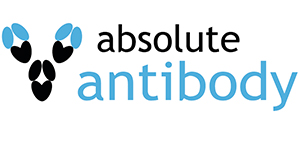Anti-HIV GP120 (JM4)
Anti-HIV GP120 [JM4], Recombinant, IgG1-Fc Fusion, Human
SKU
ABAAb03087-10.159
Packaging Unit
100 μg
Manufacturer
Absolute Antibody
Availability:
loading...
Price is loading...
CloneID: JM4
Antigen Long Description: This antibody was raised by panning a phage library created by immunizing 2 llamas with either gp120 or purified cross-linked gp140-S-S-M64U1 complex.
Buffer Composition: PBS with 0.02% Proclin 300.
Chimeric Use Statement: This chimeric human antibody was made using the variable domain sequences of the original VHH format for improved compatibility with existing reagents assays and techniques.
Available Custom Conjugation Options: AP, HRP, Fluorescein, APC, PE, Biotin Type A, Biotin Type B, Streptavidin, FluoroProbes 647H, Atto488, APC/Cy7, PE/Cy7
Uniprot Accession No.: P04578
Specificity Statement: This antibody is specific for the gp120 envelope protein of HIV-1. HIV are two species of Lentivirus (a subgroup of retrovirus) that infect humans. Over time, they cause acquired immunodeficiency syndrome (AIDS), a condition in which progressive failure of the immune system allows life-threatening opportunistic infections and cancers to thrive.
Application Notes (Clone): This antibody was characterized using an ELISA. The ELISA was preformed using the nanobody version of this antibody on the gp120 antigen. Further to test the ability of this antibody to neutralize HIV-1. A neutralization assay was preformed by incubating pseudovirons with the nanobody version of this antibody after which the infectivity of the incubated pseudovirons was tested on TZM-bl cells. Furthermore the influence of this antibody on the binding of gp120 to its cellular receptor CCR5 was assessed by flow cytometry. Gp120 was preincubated or not with 3 molar equivalents of sCD4 then futher incubated with the nanobody version of this antibody. This mixture was then added to CHO-K1 cells overexpressing CCR5 and analyzed using flow cytometry. Finally surface plasmon resonance was preformed on HIV-1 env proteins using the nanobody version of this antibody. This was done to determine the affinity of this antibody to the HIV-1 env proteins (Matz et al, 2013; pmid:23152508). The crystal structure of the nanobody version of this antibody in complex with gp120 and M48U1 was solved by molecular replacement using Phaser in the CCP4 program suite. Furthermore the structure of the nanobody version of this antibody in complex with gp120 and M48U1 was determined using x-ray crystallography (Acharya et al, 2013; pmid:23843638). To test the effect of GPI bound to the nanobody version of this antibody on cell-free HIV-1 infection, Mss-CCR5 cells transduced with GPI bound to the nanobody version of this antibody were infected with HIV-1 strains Bru-3, Bru-Yu2, JRCSF, AD8, THRO.c, and Mj4. Further the T cell T cell transmission was measured using CEMss-CCR5 cells incubated with HIV-1 JRCSF and Jurkat-CCR5 cells incubated with HIV-1. Then the ability of GPI bound to the nanobody version of this antibody to disturb the transmission was assayed. Finally the single-cycle infectivity of HIV-1 was assesed under influence of the GPI bound nanobody version of this antibody (Liu et al, 2016; pmid:27654286). The antigenicity of consensus B HIV-1 envelope proteins on the surface of a stably transfected S2 clone B2 was assesed using flow cytometry with the nanobody version of this antibody (Huang et al, 2017; pmid:28318765).
Antigen Long Description: This antibody was raised by panning a phage library created by immunizing 2 llamas with either gp120 or purified cross-linked gp140-S-S-M64U1 complex.
Buffer Composition: PBS with 0.02% Proclin 300.
Chimeric Use Statement: This chimeric human antibody was made using the variable domain sequences of the original VHH format for improved compatibility with existing reagents assays and techniques.
Available Custom Conjugation Options: AP, HRP, Fluorescein, APC, PE, Biotin Type A, Biotin Type B, Streptavidin, FluoroProbes 647H, Atto488, APC/Cy7, PE/Cy7
Uniprot Accession No.: P04578
Specificity Statement: This antibody is specific for the gp120 envelope protein of HIV-1. HIV are two species of Lentivirus (a subgroup of retrovirus) that infect humans. Over time, they cause acquired immunodeficiency syndrome (AIDS), a condition in which progressive failure of the immune system allows life-threatening opportunistic infections and cancers to thrive.
Application Notes (Clone): This antibody was characterized using an ELISA. The ELISA was preformed using the nanobody version of this antibody on the gp120 antigen. Further to test the ability of this antibody to neutralize HIV-1. A neutralization assay was preformed by incubating pseudovirons with the nanobody version of this antibody after which the infectivity of the incubated pseudovirons was tested on TZM-bl cells. Furthermore the influence of this antibody on the binding of gp120 to its cellular receptor CCR5 was assessed by flow cytometry. Gp120 was preincubated or not with 3 molar equivalents of sCD4 then futher incubated with the nanobody version of this antibody. This mixture was then added to CHO-K1 cells overexpressing CCR5 and analyzed using flow cytometry. Finally surface plasmon resonance was preformed on HIV-1 env proteins using the nanobody version of this antibody. This was done to determine the affinity of this antibody to the HIV-1 env proteins (Matz et al, 2013; pmid:23152508). The crystal structure of the nanobody version of this antibody in complex with gp120 and M48U1 was solved by molecular replacement using Phaser in the CCP4 program suite. Furthermore the structure of the nanobody version of this antibody in complex with gp120 and M48U1 was determined using x-ray crystallography (Acharya et al, 2013; pmid:23843638). To test the effect of GPI bound to the nanobody version of this antibody on cell-free HIV-1 infection, Mss-CCR5 cells transduced with GPI bound to the nanobody version of this antibody were infected with HIV-1 strains Bru-3, Bru-Yu2, JRCSF, AD8, THRO.c, and Mj4. Further the T cell T cell transmission was measured using CEMss-CCR5 cells incubated with HIV-1 JRCSF and Jurkat-CCR5 cells incubated with HIV-1. Then the ability of GPI bound to the nanobody version of this antibody to disturb the transmission was assayed. Finally the single-cycle infectivity of HIV-1 was assesed under influence of the GPI bound nanobody version of this antibody (Liu et al, 2016; pmid:27654286). The antigenicity of consensus B HIV-1 envelope proteins on the surface of a stably transfected S2 clone B2 was assesed using flow cytometry with the nanobody version of this antibody (Huang et al, 2017; pmid:28318765).
| SKU | ABAAb03087-10.159 |
|---|---|
| Manufacturer | Absolute Antibody |
| Manufacturer SKU | Ab03087-10.159 |
| Package Unit | 100 μg |
| Quantity Unit | STK |
| Reactivity | Various species |
| Clonality | Recombinant |
| Application | ELISA, Flow Cytometry, Neutralization, Functional Assay, Super-Resolution Microscopy |
| Isotype | IgG1-Fc Fusion |
| Host | Human |
| Product information (PDF) | Download |
| MSDS (PDF) | Download |

 Deutsch
Deutsch







